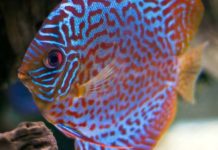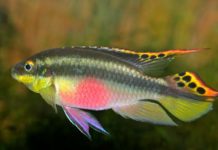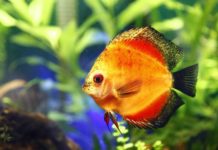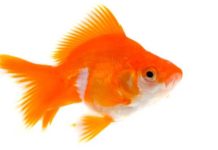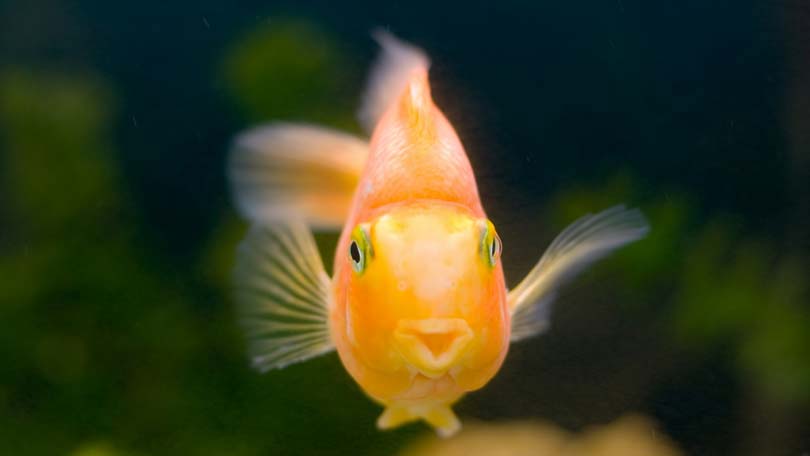
Cichlids are a diverse group of fish which encompass numerous different varieties. These fish tend to exhibit a wide diversity of body shape, ranging from those which are more laterally compressed to species which are highly elongated and cylindrical. Since 1945, they have increasingly become favored as popular aquarium fish.
South American Cichlids are often referred to as New World Cichlids. These cichlids are quite hardy and are easy to care for in comparison to many other types of fish. With the addition of these cichlids you can add a brilliant splash of color to your freshwater aquarium. South American Cichlids are often categorized into Dwarf Cichlids, Larger Amazonian Cichlids and Larger Notropical Cichlids. All of these different categories require different levels of care as well as have different requirements for their tanks, so it is important to make sure you understand the needs of your cichlids before you bring them home.
For example, soft water Dward Cichlids tend to be far more passive than their larger peers, making them an excellent addition for a fairly peaceful aquarium community. Larger Amazonian Chichlids as well as Neotropical Cichlids have the ability to adapt to many different size water environments. Larger species do tend to be predatory and can be territorial in nature, so it is generally recommended for them to be maintained in a semi-aggressive or aggressive environment. In some cases, provided you maintain a large enough tank, the aggressive varieties can co-exist in harmony with the more peaceful cichlids. Making an effort to provide plenty of rocks and hiding places are the more peaceful cichlids can also help to keep things calm.
When it comes to personalities, the South American Cichlids tend to be quite interesting and displace intelligence that is more evolved than many fish. With more than 450 South American Cichlid varieties there is certainly a large number to choose from in order to add variety and color to your tank. Most South American cichlids are carnivores; however, some will feed on plant material. The largest of the South American cichlids will grow up to 60 centimeters while the smallest grow no larger than 3 centimeters in length.
Perhaps one of the most famous of the South American cichlids is the freshwater Angelfish. To properly maintain your Angelfish, you will need to continually monitor the pH-value in your aquarium, assuring it rests between 6.5 and 6.9. Oscar cichlids are also very popular, hailing from the acidic waters in South America. These fish tend to be highly intelligent and are often investigative in nature. As a result, they can grow bored in an environment that is barren, so it is preferable to provide them with plenty of toys and a lively environment.
Many of the African cichlid varieties hail from the Lake Malawi region; however, numerous others may come from other African river and lake areas as well. Most of these regions are acidic; however, some can be alkaline so it is important to know the requirements for your particular species before you bring them home.
The Nigeria Green is a popular African cichlid which is found in the acidic waters in both Cameroon as well as Nigeria. Males can grow up to 3.5 inches while females are somewhat smaller. Both genders can display brilliant and vivid colors, particularly during the breeding period.
Other popular African cichlids include the Jewel Cichlid as well as the Red Cichlid. The latter tends to be somewhat aggressive, so it should only be housed with sturdy species or else housed in a larger tank environment; in a minimum of a 75 gallon tank.
Generally, even some of the more aggressive cichlids can be maintained without problems provided they are given sufficient aquarium space which will allow for their more aggressive tendencies as well as their growth. It is also important not to overcrowd the larger varieties of cichlids, such as Oscars, as they grow long quite quickly. A 75-100 gallon aquarium, at a minimum, is recommended for just two Oscars to allow for their rapid growth rates.
By providing sufficient space, maintaining your pH-value in accordance with your species needs and monitoring the temperature of the water, you can be sure your cichlids will live a long and healthy life.

